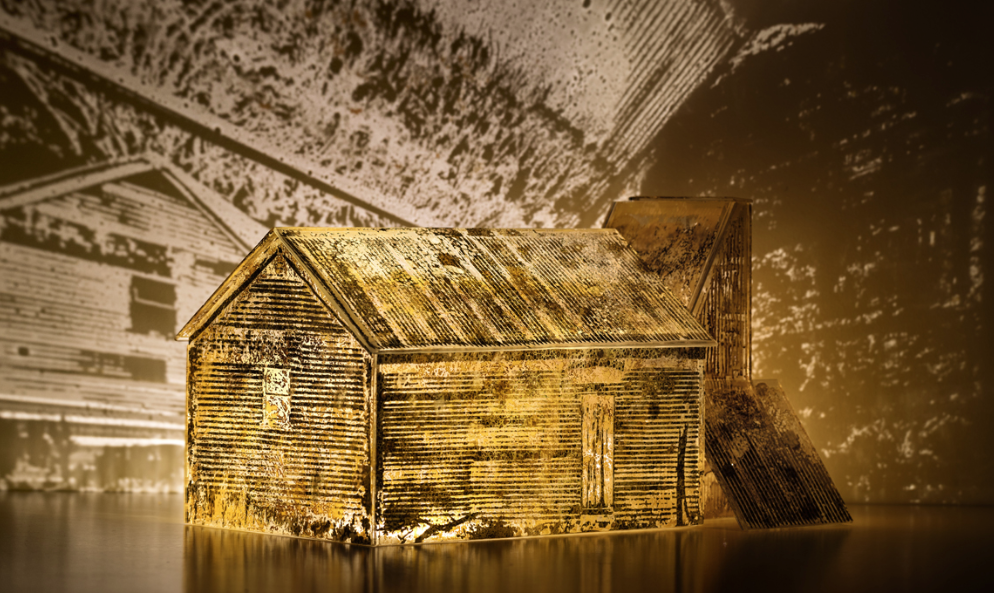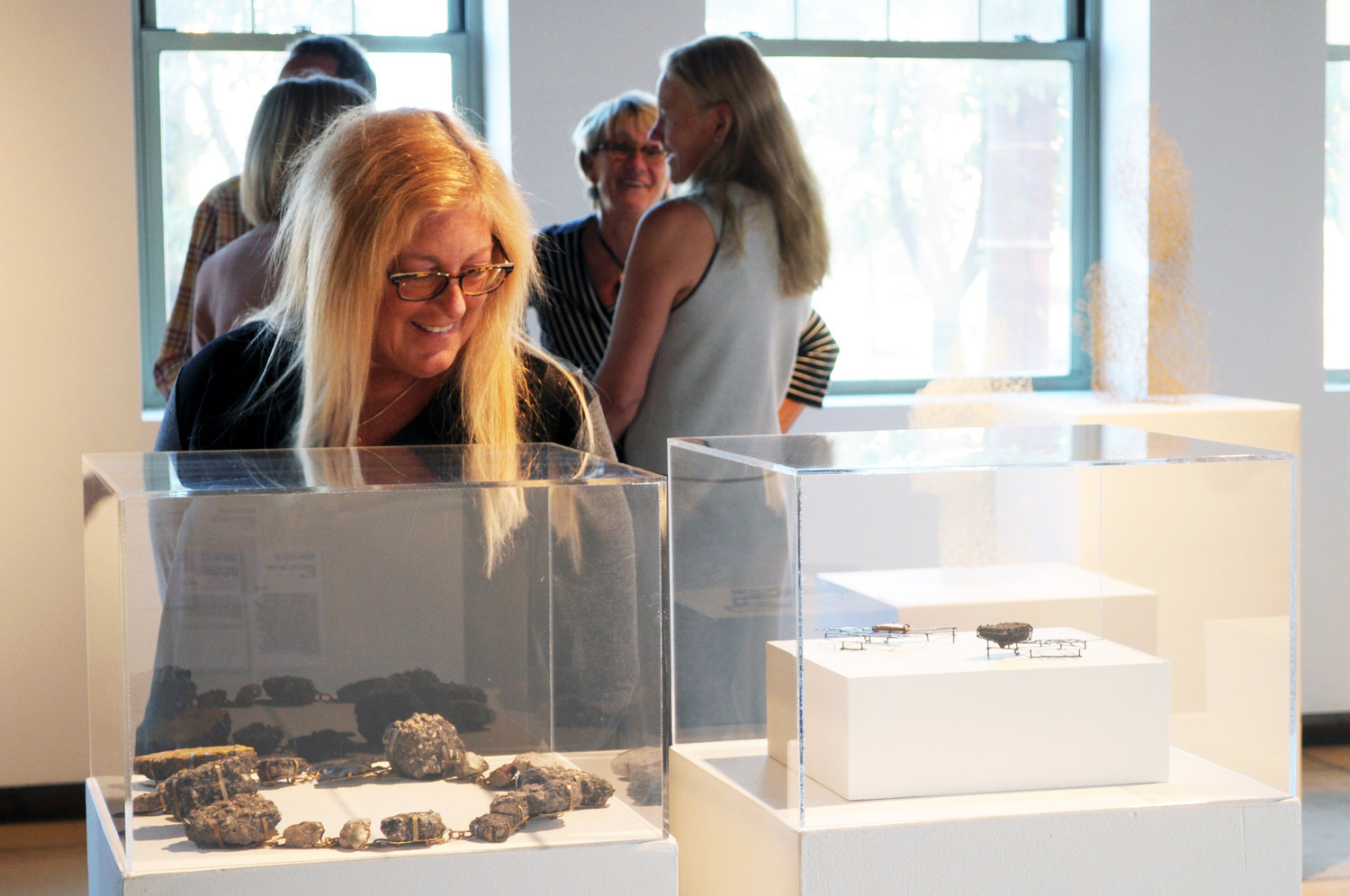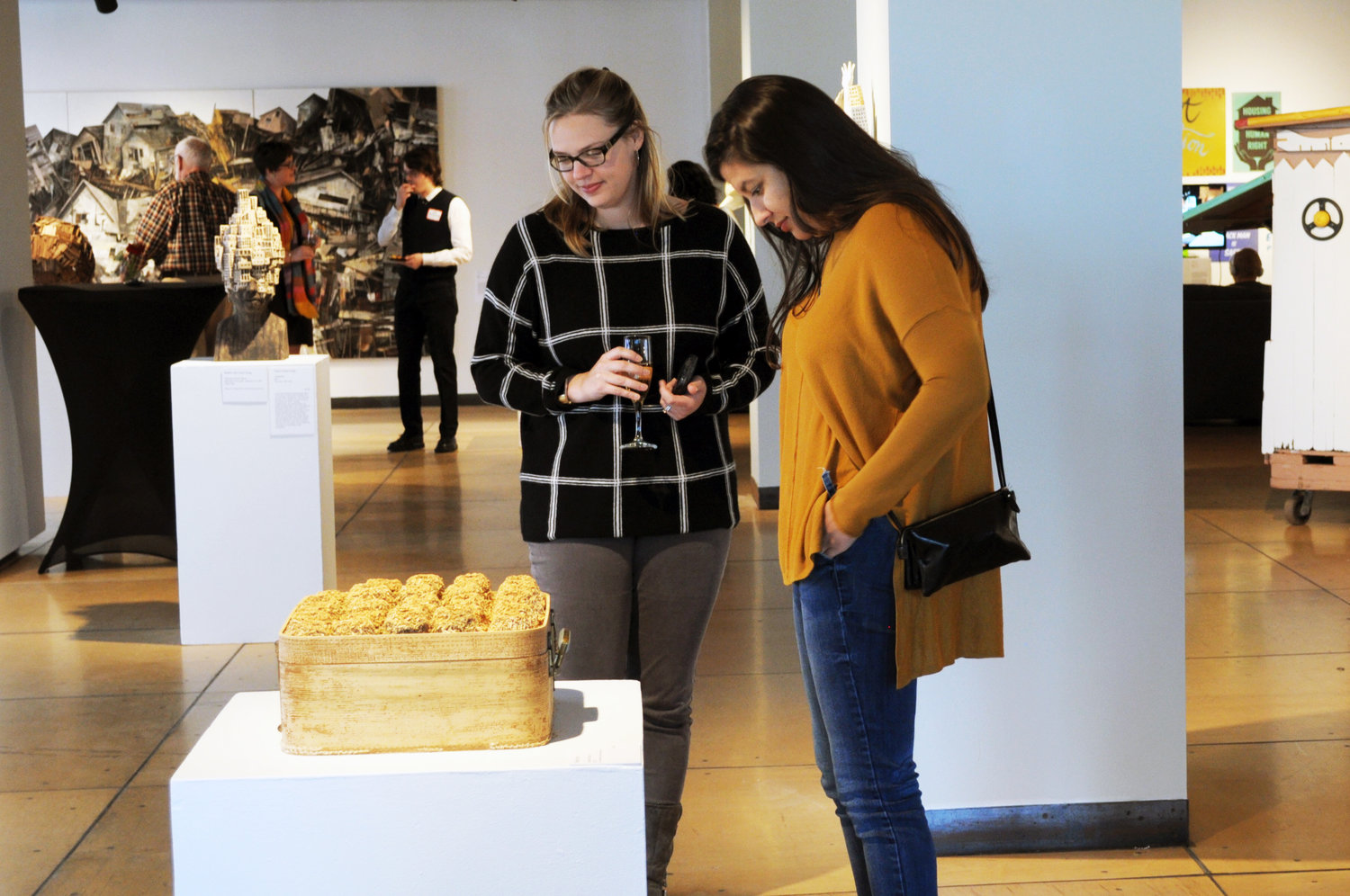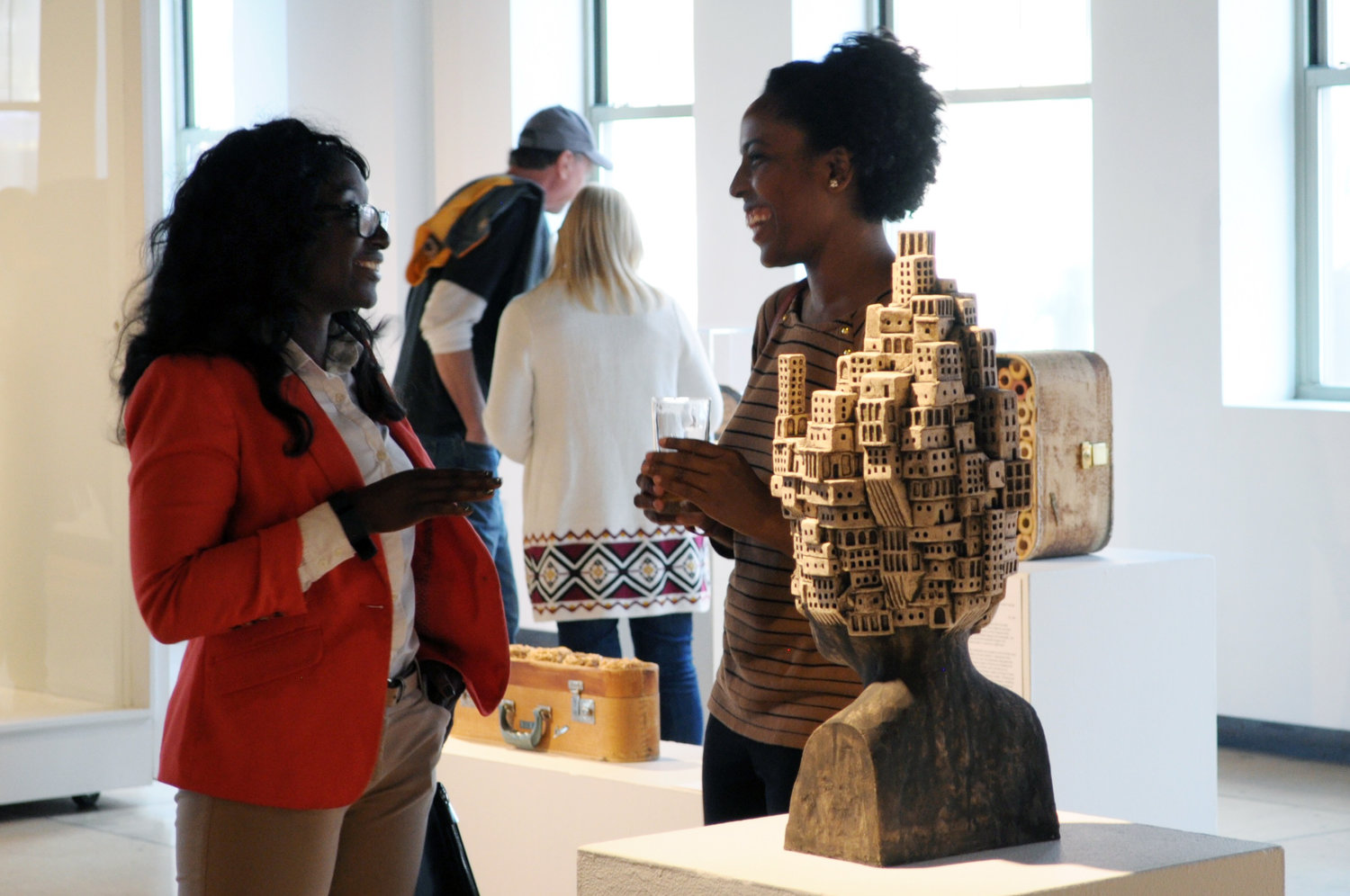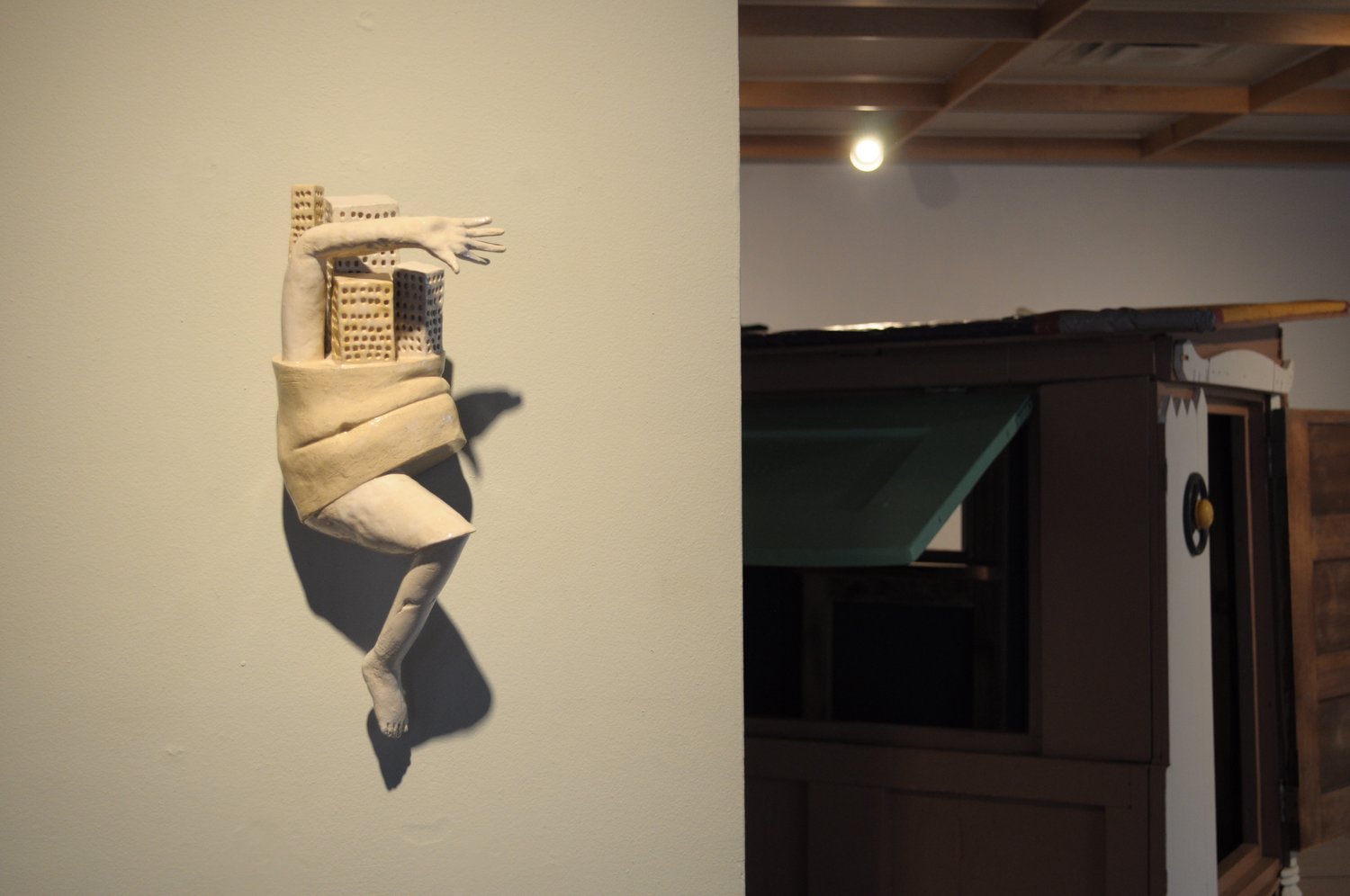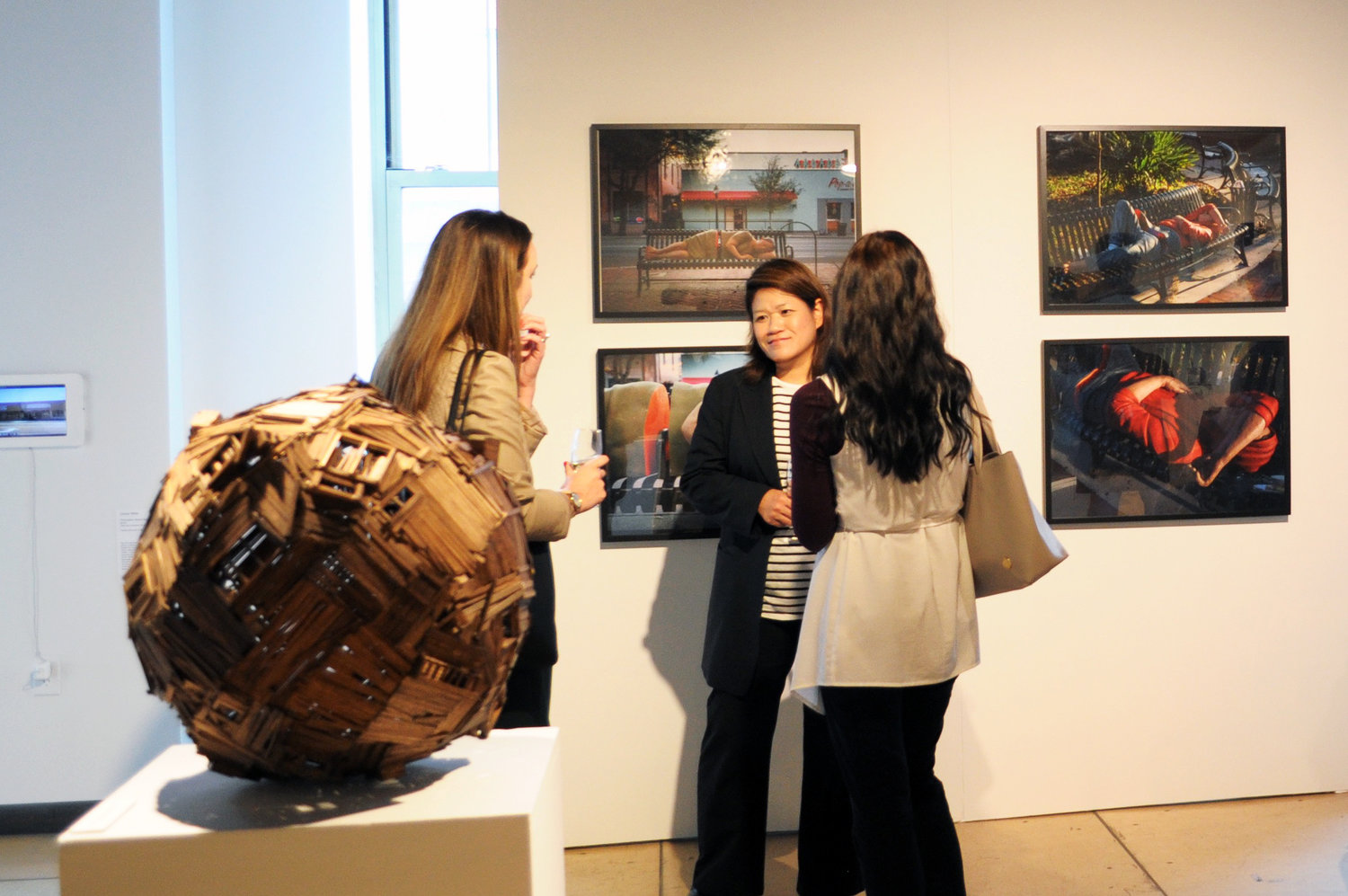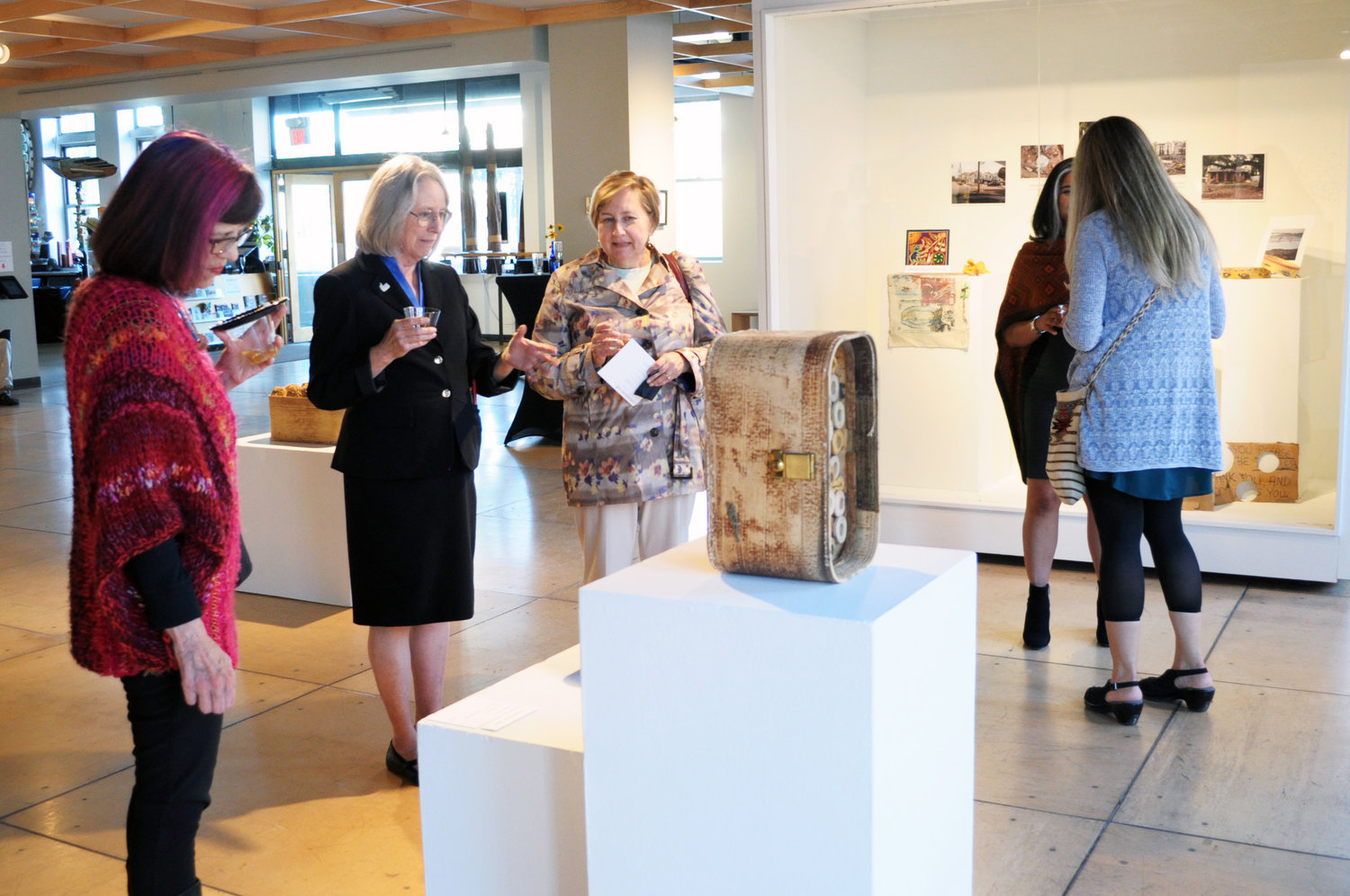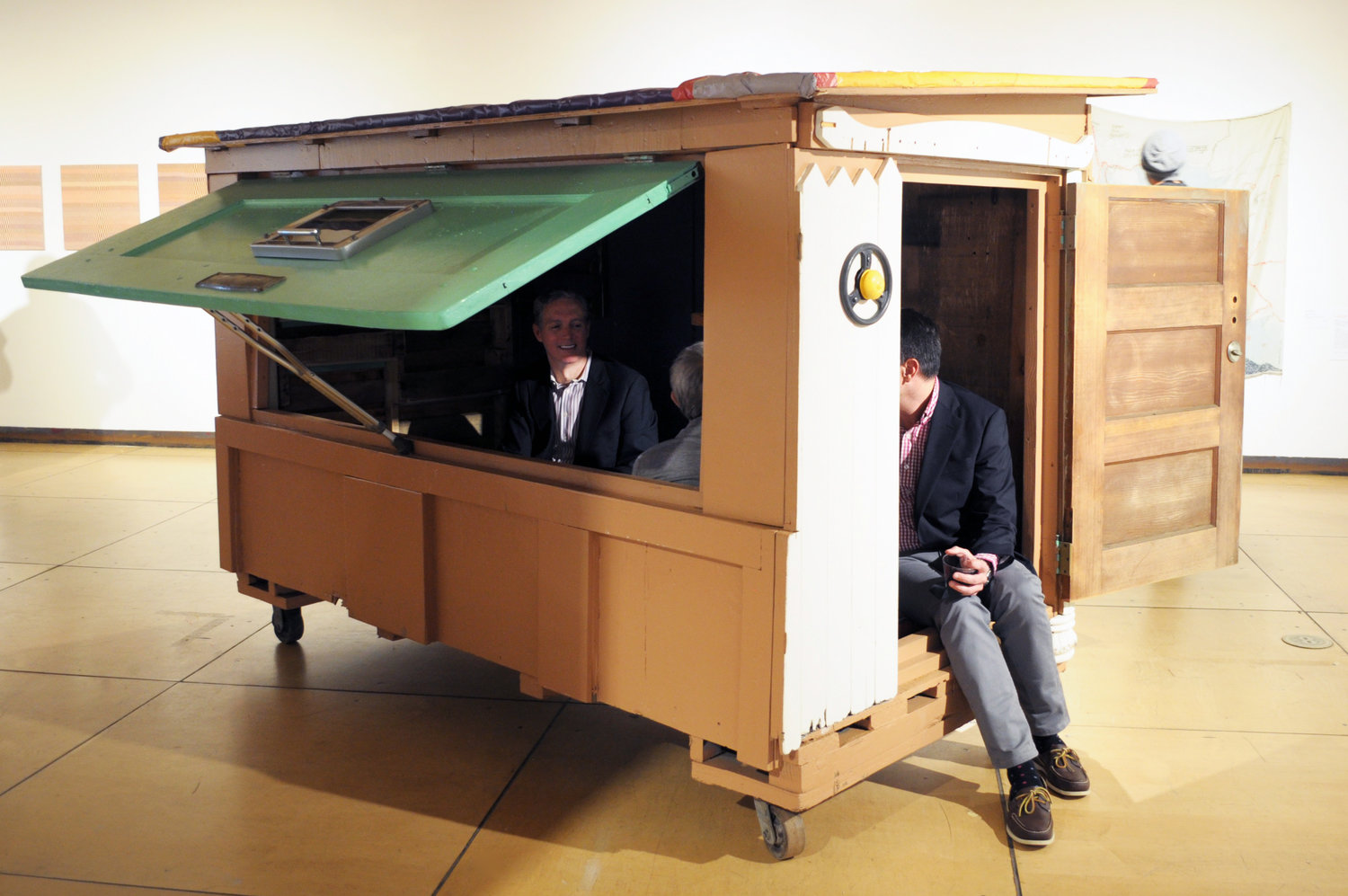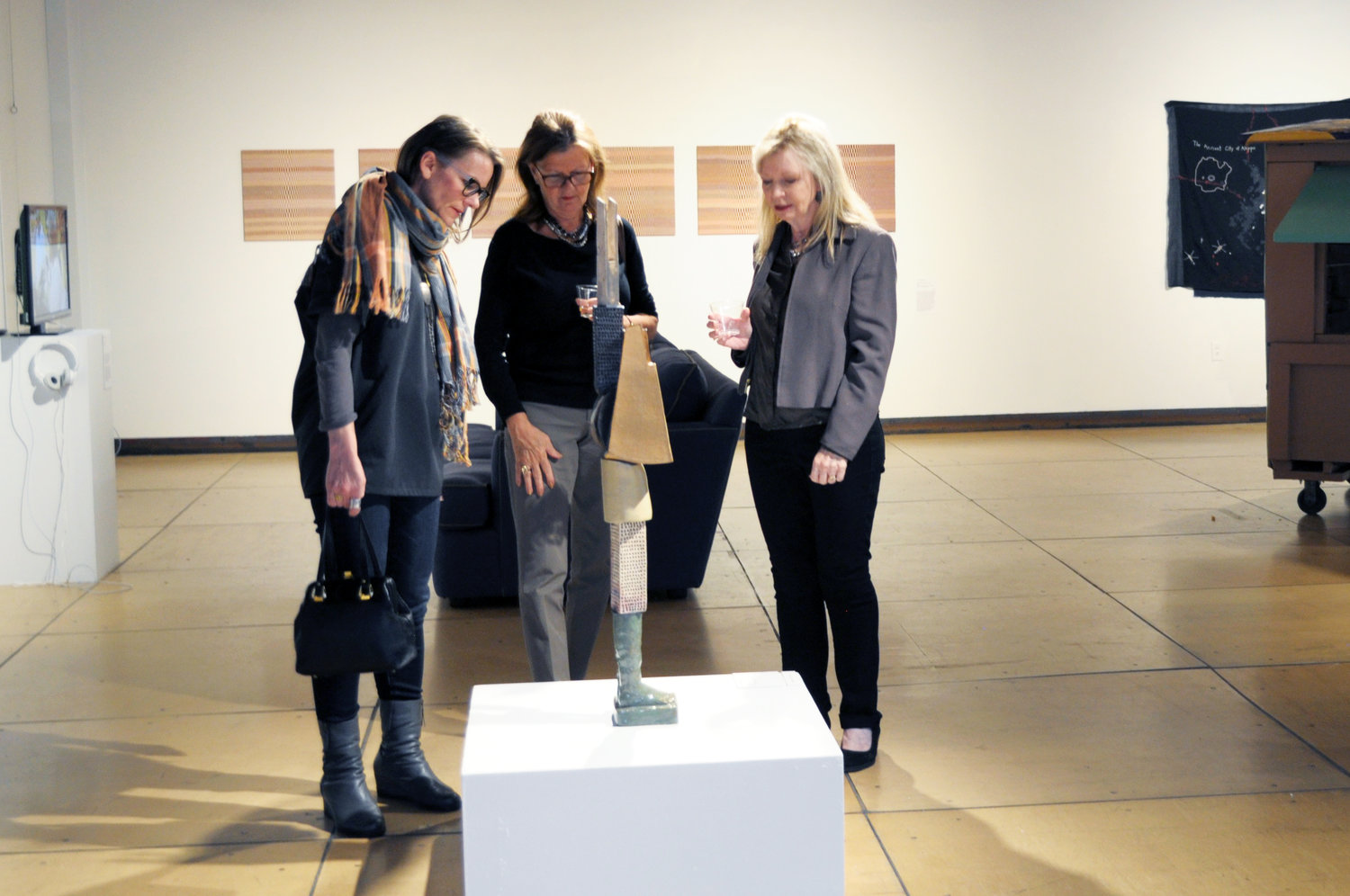Kathryn Clark
Inspired by the Bayeux Tapestries, Refugee Stories is a series of six embroidery panels that follow the recent journey of the Syrian refugees. The second largest mass migration in history is documented in various points along the refugees’ journey: beginning in Aleppo, living in camps, the journey by sea and land and culminating with a final panel representing their new home. Each point along their journey was affected by geography: by sea or land, pastoral farmland or war town desert. Using news stories, Google Earth, and numerical data from the UN, each panel pieces the journey into one polyphonic map.
Seth Clark
My work focuses on deteriorating architecture. These structures, designed to be huge forces of permanence, are continually being challenged, destroyed and forgotten. I see an inherent honesty in the face of my subject. Among all of the clutter—the shards of wood and layers of rubble—there remains a gentle resolve. As I work, I study these structures incessantly. The buildings, often on the brink of ruin, have something very energized and present trying to escape from their fragmented reality.
Motoko Furuhashi
I am deeply fascinated with imperfection and the complexity of the natural cycle of growth, decay and death. These processes govern life from one place to another. By highlighting what is viewed as imperfect I seek to bring relevance to the object. My use of site-specific art as a medium expands the conceptual meaning and purpose of the object, giving me the freedom to play with the view of time and location. Relevant to the site from which it has been excavated, each found object is a unique representation of the interrelationships between time, location, perception, and importance. Each site is unique to its self and carries a history of distant memories waiting to be told.
Holly Grace
In this society, which is becomingly increasingly estranged from its own natural environment, the subtle balance of life is being thrown awry by our own wants and desires. We head blindly towards an existence devoid of our own unique heritage and spirituality.
My journey, a path that is both lonely and fulfilling, leads towards a refuge hidden by distance and my thoughts. Within these walls built by past people, I sit, listen, and look at a transforming vista. In the changing light of day I witness nature’s dawn and dusk, both sublime and transcendental in its beauty.
In my solitude, I find an understanding of a landscape that both surrounds and lies within me.
Clara Grace Hoag
I build ceramic figure sculptures that reflect on the nature of the human condition and the lived urban experience. I work with clay because, as a material, it says a lot about how people are “built”—literally, metaphorically, and philosophically. My bodies are fragmented, and my architectural language blends with human anatomy to give each sculpture the personality of a city. Single buildings celebrate individuality or elevate the mundane; collectively, they create tenuous landscapes where strength and vulnerability fight, constantly seeking balance. Moreover, each piece is greater than the sum of its parts—an end state that is equally true of buildings, cities, and people.
Chris Ivey
I am an artist first, then filmmaker, but all of my life I have been a minority and have experienced life like many other minorities. I strive to give the audience a view of life and how events could affect them – even when they are not directly affected.
My documentary series East of Liberty focuses on race, class and gentrification fears. The series is a historical document and the only interactive documentation project in recent Pittsburgh history. My long-term goal is to have the films available in schools, libraries and archives in order to make future generations aware of the issues inherent to urban renewal.
“Everyone needs to have their voice heard. You’re not going to agree with everybody, but everybody has to be heard for the dialogue to start.”
Gregory Kloehn
I am an an artist and tiny house builder in Oakland, California. I use found materials, including illegally dumped items, to build unique structures at a cost of less than $100.
The Homeless Homes Project is an asymmetrical approach to modern living. Collective ideas, good will, and basic construction skills unite to repurpose materials from illegal street dumping, commercial waste, and excess household items into viable living spaces. Each structure is unique and all homes are mobile to accommodate the nomadic life style of homeless residents, while avoiding the complexities of permanent structures.
Robert Lach
Nesting is both a joyous time for birth, comfort and rest, and a fight for survival from the elements of the natural world. Nature provides beauty and tranquility, but also portends potential danger and destruction. It can be a nightmare.
My aesthetics are based on the function and utility of found objects. I repurpose their form. For me, the suitcases represent the transitory nature of home by imitating the behavior of birds, and connect to my childhood domestic reality of living in many places and not feeling rooted. Growing up this way, I found solace in nature. Building nests is a ritual expression, an attempt at stability – shelter replacing transience.
ROY
Homelessness and shelter have been recurring themes in my work. The raw, handwritten words on a homeless person’s sign, and the indifference of the onlooker is of interest to me. When I incorporate a homeless person or refugee’s text in my metal tambourine sculptures, I hope to reinvent the importance of their message.
Demitra Thomloudis
The blatant disregard of architectural and cultural preservation in the urban center of Houston is alarming. The Houston Yellow Tape Project (HYTP) employs jewelry as a catalyst to preserve and transform the residual debris from the expedient urbanization and demolition of ten residential homes. Formed by remnants collected from these sites, the jewelry captures both collective and individual identities and preserves a fragment of what no longer exists. The jewelry in HYTP physically embodies a singular, discarded moment during the sprawling trajectory of the city. These works were designed to mandate attention when worn and ignite conversations between wearer and viewer regarding connections to material, place, and time.
Consuelo Underwood
Since Europeans first came to this continent, there have been battles over our borders. My work celebrates the notions of land and spirit, questioning the clarity of this country and its borders.
Empowered by threads, inspired by “anonymous” handwork, and driven by a desire for justice and freedom, I seek to heal bi-cultural wounds incurred by national biases that have immigrated to America from across the seas.
The flag embodies the history, ideals and aspirations of a nation. Tenaciously, “by a thread,” flora, fauna, and celestial entities are quietly observing, and sigh with dismay, “Why can’t they get along?”
Tali Weinberg
I produce inter-subjective reference materials: charts, maps, blueprints, and encyclopedias that take form as weavings, thread drawings, prints, and artist’s books. These works fuse text and textiles to address climate change, the housing crisis, and other traumas and insecurities experienced as both social and personal. I work with textiles—as structures, systems of knowledge, and the material of everyday life—to create physical and psychological, material and metaphoric, temporal and geographic links between social change and our lives as experienced in our homes and on our bodies. Situated within global practices of women creatively reusing materials to produce objects of care and connection, my process is one of deconstructing and restructuring. Lines of thread are a pathway, allowing us to trace knots of violence and displacement; disentangling and then re-weaving structures of intimacy.
Charity White
Prescriptive Space is a temporary public installation of ceramic figures on divided city benches designed to prohibit people experiencing homelessness from sleeping. The bisections of the figures not only highlight the handrails but also contain information related to Gainesville’s history of public policy and movement of marginalized people. My work seeks to make visible the politics of urban design and invites the community to reconsider our use of participation in public space. Installation performance exists as video documentation of interactions between the ceramic figures and the public at three city benches, capturing moments of discovery, discussion, humor, aggression, and compassion.
Soonran Youn
The notion of “to be” exists because of its binary opposite “not to be.” My work is a diffusion of existence and absence. The endless cycle of lacking and sufficing is a human condition, and as such the present is centered between to be and not to be. To keep this cycle rotating smoothly, binary oppositions such as to be and not to be, lacking and sufficing, body and mind, and I and other should be well balanced. Contemplating these oppositions is a practice for emptying out “I, here, and now,” to return to anonymity as well as to become considerate in sympathy.
